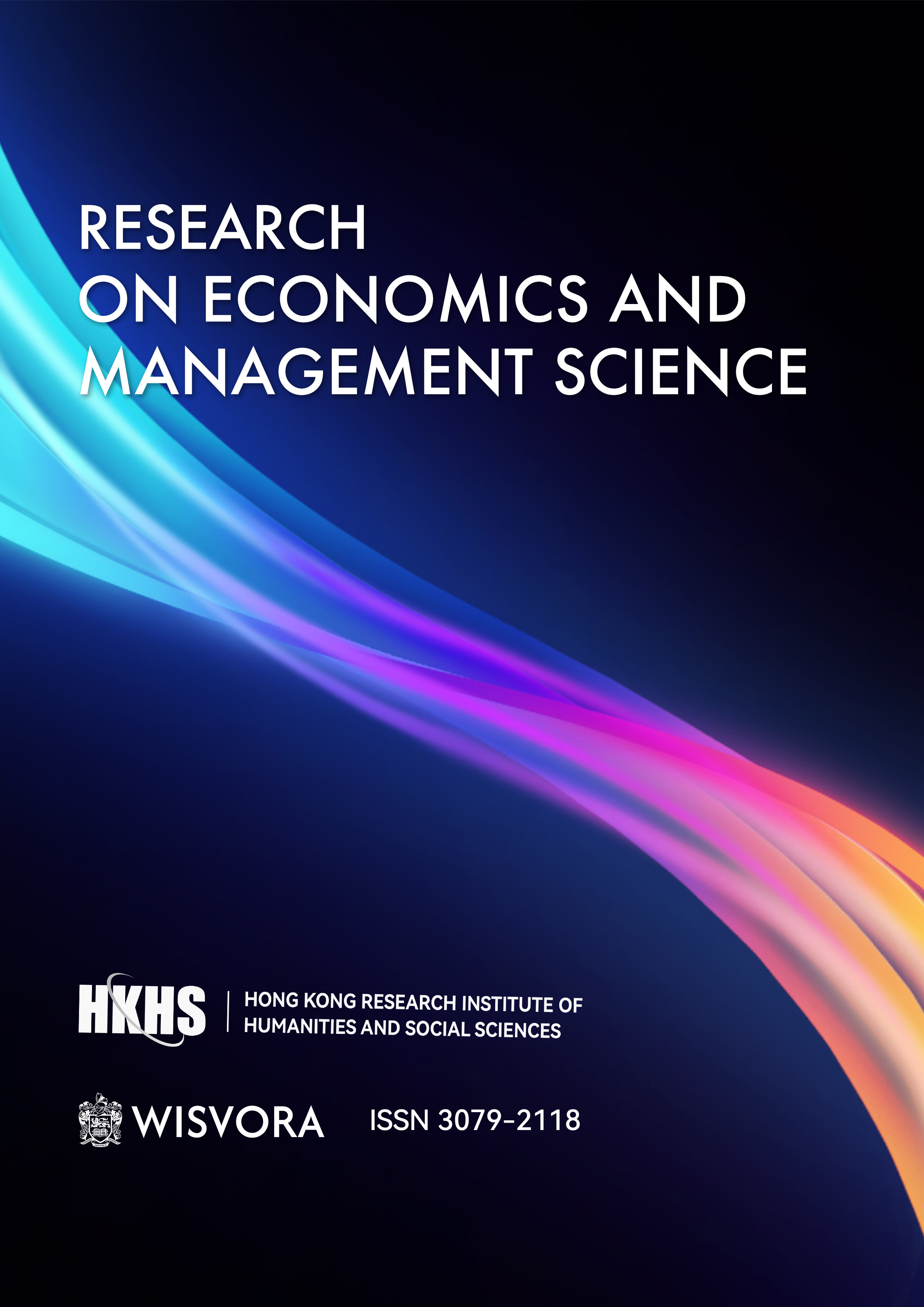Abstract
Grounded in the cognitive transactional theory of stress, this study develops and tests a moderated dual-path mediation model to investigate the dual effects of ambidextrous leadership on employee work disengagement and its underlying mechanisms. Based on three-wave survey data from Chinese enterprises (N=348), the findings reveal that ambidextrous leadership simultaneously increases both challenge and hindrance stress, which, in turn, indirectly influence work disengagement in opposite directions. Specifically, elevated challenge stress alleviates work disengagement, whereas heightened hindrance stress intensifies it. Moreover, leadership behavioral flexibility moderates these relationships, such that when flexibility is high, ambidextrous leadership is more effective in reducing work disengagement through the enhancement of challenge stress. By delineating these distinct stress pathways and their boundary conditions, this study deepens the understanding of how ambidextrous leadership differentially impacts employees and provides valuable managerial implications for organizations.
References
Alghamdi, F. (2018). Ambidextrous leadership, ambidextrous employee, and the interaction between ambidextrous leadership and employee innovative performance. Journal of Innovation and Entrepreneurship, 7(1), 1–14.
Aslam, U., Muqadas, F., Imran, M. K., & Rahman, U. U. (2018). Investigating the antecedents of work disengagement in the workplace. Journal of Management Development, 37(2), 149–164.
Bhattacharya, M., Gibson, D. E., & Doty, D. H. (2005). The effects of flexibility in employee skills, employee behaviors, and human resource practices on firm performance. Journal of Management, 31(4), 622–640.
Bidmon, C. M., & Boe-Lillegraven, S. (2020). Now, switch! Individuals’ responses to imposed switches between exploration and exploitation. Long Range Planning, 53(6), 101928.
Boswell, W. R., Olson-Buchanan, J. B., & LePine, M. A. (2004). Relations between stress and work outcomes: The role of felt challenge, job control, and psychological strain. Journal of Vocational Behavior, 64(1), 165–181.
Brislin, R. W. (1986). The wording and translation of research instruments.
Cavanaugh, M. A., Boswell, W. R., Roehling, M. V., & Boudreau, J. W. (2000). An empirical examination of self-reported work stress among US managers. Journal of Applied Psychology, 85(1), 65-74.
Cheng, C. (2024). Do what is possible with enthusiasm: The impact of ambidextrous leadership on employees’ innovation behaviour. Leadership & Organization Development Journal, 45(4), 578–601.
Decker, P. J., & Borgen, F. H. (1993). Dimensions of work appraisal: Stress, strain, coping, job satisfaction, and negative affectivity. Journal of Counseling Psychology, 40(4), 470-478.
Demerouti, E., Bakker, A. B., Nachreiner, F., & Schaufeli, W. B. (2001). The job demands-resources model of burnout. Journal of Applied Psychology, 86(3), 499-512.
Floyd, S. W., & Lane, P. J. (2000). Strategizing throughout the Organization: Managing Role Conflict in Strategic Renewal. The Academy of Management Review, 25(1), 154-177.
Gerlach, F., Rosing, K., & Zacher, H. (2021). Flexible adaptation of leader behavior: An experimental analysis of the beneficial effect of flexibility in innovation processes. Journal of Personnel Psychology, 20(4), 198.
Harman, H. H. (1976). Modern factor analysis. University of Chicago press.
Herrmann, D., & Felfe, J. (2013). Moderators of the relationship between leadership style and employee creativity: The role of task novelty and personal initiative. Creativity Research Journal, 25(2), 172–181.
Hunter, S. T., Cushenbery, L. D., & Jayne, B. (2017). Why dual leaders will drive innovation: Resolving the exploration and exploitation dilemma with a conservation of resources solution. Journal of Organizational Behavior, 38(8), 1183–1195.
Jain, S. (2024). Ambidextrous leadership, social capital, creative behaviour and well-being: a mediation-moderation model. International Journal of Organizational Analysis, 32(9), 1615-1634.
Jia, J., Yan, J., Cai, Y., & Liu, Y. (2018). Paradoxical leadership incongruence and Chinese individuals’ followership behaviors: Moderation effects of hierarchical culture and perceived strength of human resource management system. Asian Business & Management, 17(5), 313–338.
Keller, T., & Weibler, J. (2015). What it takes and costs to be an ambidextrous manager: Linking leadership and cognitive strain to balancing exploration and exploitation. Journal of Leadership & Organizational Studies, 22(1), 54–71.
Lazarus, R. S., & Folkman, S. (1986). Cognitive Theories of Stress and the Issue of Circularity. In M. H. Appley & R. Trumbull (Eds.), Dynamics of Stress (pp. 63–80). Springer US.
Lin, C. P., Xian, J., Li, B., & Huang, H. (2020). Transformational Leadership and Employees’ Thriving at Work: The Mediating Roles of Challenge-Hindrance Stressors. Frontiers in Psychology, 11, 1400.
Lindberg, J. T., & Kaiser, R. B. (2004). Assessing the behavioral flexibility of managers: A comparison of methods. 19th Annual Conference of the Society for Industrial and Organizational Psychology, Chicago, IL.
March, J. G. (1991). Exploration and exploitation in organizational learning. Organization Science, 2(1), 71–87.
Ouyang, C., Zhu, Y., & Ma, Z. (2022). Ambidextrous Leadership and Employee Voice Behavior: The Role of Work Motivation and Ambidextrous Culture. Psychology Research and Behavior Management, Volume 15, 2899–2914.
Ren, L., Zhang, X., Chen, P., & Liu, Q. (2022). The Impact of Empowering Leadership on Employee Improvisation: Roles of Challenge-Hindrance Stress and Psychological Availability. Psychology Research and Behavior Management, Volume 15, 2783–2801.
Rosing, K., Frese, M., & Bausch, A. (2011). Explaining the heterogeneity of the leadership-innovation relationship: Ambidextrous leadership. The Leadership Quarterly, 22(5), 956–974.
Rosing, K., & Zacher, H. (2023). Ambidextrous leadership: A review of theoretical developments and empirical evidence. Handbook of Organizational Creativity, 51–70.
Sawhney, G., & Michel, J. S. (2022). Challenge and Hindrance Stressors and Work Outcomes: The Moderating Role of Day-Level Affect. Journal of Business and Psychology, 37(2), 389–405.
Schreiner, E. (2017). Ambidextrous leaders and employee innovation, well-being, leader perception: A moderation. Academy of Management Proceedings, 2017(1), 16617.
Wang, S., Eva, N., Newman, A., & Zhou, H. (2021). A double-edged sword: The effects of ambidextrous leadership on follower innovative behaviors. Asia Pacific Journal of Management, 38, 1305–1326.
Zacher, H., & Rosing, K. (2015). Ambidextrous leadership and team innovation. Leadership & Organization Development Journal, 36(1), 54–68.
Zhang, Y., Waldman, D. A., Han, Y.-L., & Li, X.-B. (2015). Paradoxical Leader Behaviors in People Management: Antecedents and Consequences. Academy of Management Journal, 58(2), 538–566.

This work is licensed under a Creative Commons Attribution-NonCommercial 4.0 International License.
Copyright (c) 2025 Ke Zhang; Zhaoqi Li (Corresponding Author)

